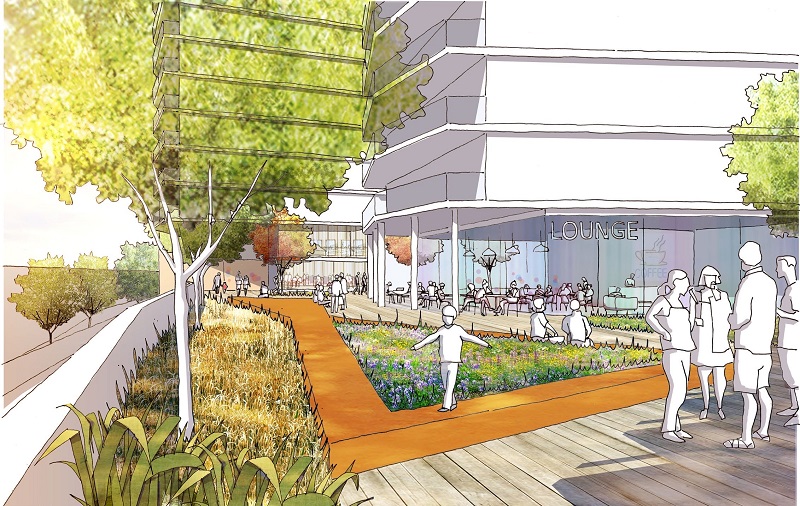Recent changes to planning legislation have created a new avenue for the delivery of health and care services in the heart of local communities.
The changes provide greater flexibility to change the use of former retail and commercial premises, many of which closed during the pandemic, into health and wellbeing centres.
And this approach was the subject of a recent podcast, led by health and care property developer, Prime Plc.
Opening the event, Leighton Chumbley, Prime chief executive, said the company had been looking back across the portfolio of its health and care projects delivered over the past 25 years.
He told the podcast: “Where are our health centres if not on the high street?
“The answer is in urban areas and out of town, close to existing hospital sites, which are situated where they are due to historic reasons, located away from centres of population – a Victorian trend of wanting these healthcare spaces to be away from the ‘healthy’.
There is a lot of empty or disused space just off the high street, but still in the heart of the town where these mixed-use facilities could make a huge difference
“They are often isolated from community services and ‘out of the way’, built on cheaper land due to their suburban location, so can often require transport to access them.
“This approach does not match with modern day needs and the ‘on-demand’ lifestyle we all lead.”
Prime’s research shows there is vacant retail floorspace in many town centre locations, with around 40% of that space having been empty for more than three years.
And, while the developer does not target these ‘heart of the high street’ locations, it predicts the biggest opportunity for health and care services will be taking over empty or disused space just off the main thoroughfare.
Chumbley said: “There is a lot of empty or disused space just off the high street, but still in the heart of the town where these mixed-use facilities could make a huge difference.
“The value of tertiary retail space has dropped by 60% since 2016 – a dramatic decrease due to retailers and businesses no longer wishing to occupy this space due to a lack of footfall.

The village concept includes housing for keyworkers and older people as well as health and care services and shops and leisure outlets
“This now means that these locations are more viable and affordable for the NHS and other health service providers to bring these services into the heart of the community.”
Also speaking at the podcast was Sarb Basi, director of primary care at NHS Black Country and West Birmingham Clinical Commissioning Group.
He said: “The COVID-19 pandemic has driven a disequilibrium in the healthcare system and its services, with mass reports of cancelled or delayed appointments causing a huge knock-on effect to the system.
“There will be a slow recovery from this pandemic, so it is important to think how we can now promote physical health and wellbeing moving forward and create health spaces for people to interact and better access services.
The NHS is moving towards an integrated care service, which requires greater collaboration between departments, so central hubs that will bring people together, with access to professionals when they need them, is important to support a population that is living longer
“The NHS is moving towards an integrated care service, which requires greater collaboration between departments, so central hubs that will bring people together, with access to professionals when they need them, is important to support a population that is living longer.
“We need to invest in more downstream care that will support and identify people who are presenting specific symptoms that previously could have been missed or gone unnoticed.
“This will help make people take responsibility for their own health – much like online banking transformed the banking sector, by making people take responsible for their own financial health.”
Easy access to services, and the need to be more pro-active in the delivery of healthcare, was also seen as a key driver by Nancy Hey, executive director of the What Works Centre for Wellbeing who called for the creation of ‘urban health and care villages’.
She said: “Since the pandemic, people are much more aware of their physical and mental health, and this is the biggest overall driver of our personal wellbeing.
“The repurposing of the high street could see more housing in the centre of town which could then be accompanied by health centres and key amenities to bring communities closer and not as spaced out.
“These urban health and care villages could restructure communities and breathe life back into the high street, which will, in turn, attract other business.
What we could deliver with urban health and care villages is high-quality housing for key workers, as well as older people that don’t want to be in a traditional retirement development
“Focusing on a balanced mix of services is important to this.”
Chumbley added: “Typically, people tend to stay in their homes until they can no longer be independent and then go into institutions or care homes.
“What we could deliver with urban health and care villages is high-quality housing for key workers, as well as older people that don’t want to be in a traditional retirement development but also are in a time of life where being in an easier-to-manage home and location close to amenities matches their needs.
“This, in turn, will bring an active population into the heart of town centres, which could revitalise the retail and hospitality businesses located here, while accessible health and wellbeing facilities will also bring more people into the centre rather than push them out to the periphery of urban areas.”
And Basi concluded: “An urban health and care village on the high street not only revitalises an area, but it puts healthcare professionals in easy access to places and makes them available when people need them.
“It is a win-win for the healthcare service and local authorities.”
